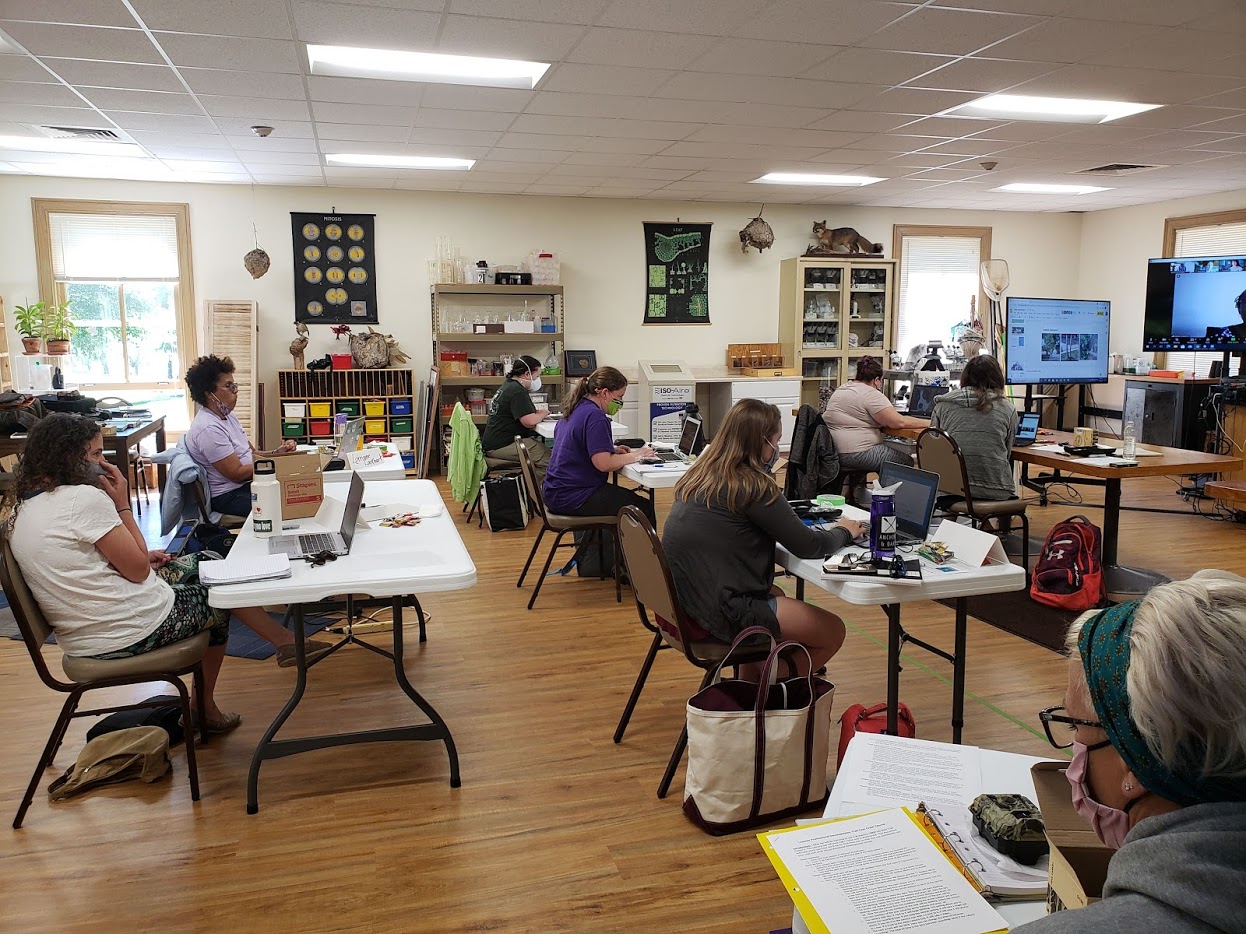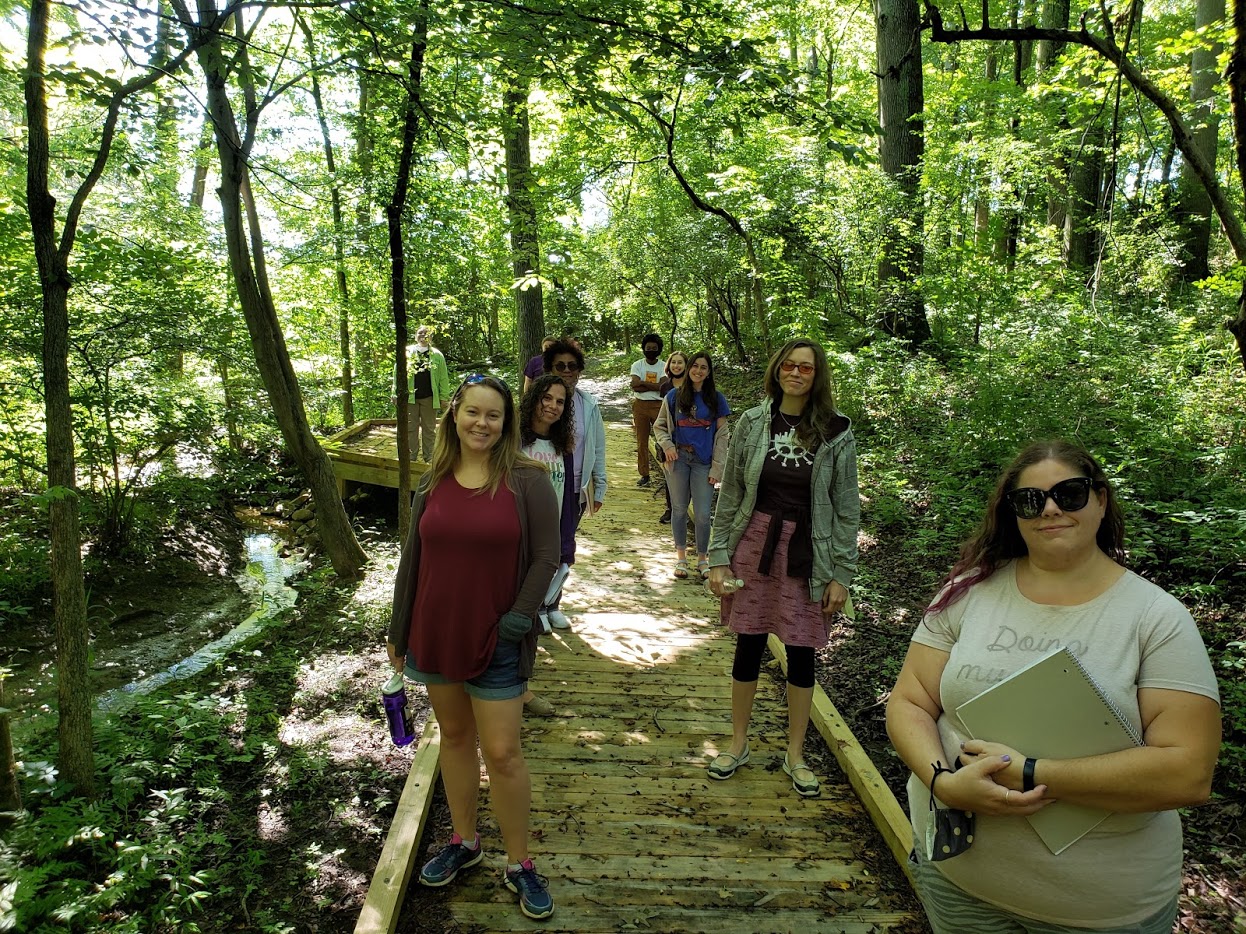by Deva Holliman
This summer, the Smithsonian Environmental Research Center (SERC) invited 21 Maryland educators to join a three-day “hybrid” workshop (virtual and in-person) on how to teach watershed science. The workshop was part of a collaboration with the Maryland Association for Environmental and Outdoor Education (MAEOE). It went swimmingly.
In normal years the SERC education team brings up to 6,000 visitors from around the Chesapeake, leading field trips for K-12 students and programs for adults. A growing component of SERC’s educational outreach is devoted to teacher professional development. These trainings help teachers learn the practices and techniques that SERC scientists use, and take them back to the classroom.
But as the pandemic raged on, SERC was forced to adjust its education model. Unable to bring students to the Edgewater campus, field trips and workshops went virtual. As with the rest of the world, in-person experiences switched to Zoom. While the quality of SERC’s education programs stayed the same, many longed for the days of bustling classrooms and hands-on science.
That’s when Karen McDonald, SERC’s director of education, had an idea. Collaborating with MAEOE, McDonald hoped to create a workshop for Maryland educators that focused on teaching children about watersheds.
“During COVID, teaching about watersheds to students who are remote and can’t necessarily go outside is super challenging,” said McDonald. “On top of that, many teachers don’t know how to take students outside to study their local watersheds. This is going to be something super desirable when we go back to school because we need to socially distance. And being outside is a perfect way to do it.”
Watershed science is an incredibly broad topic. It covers everything from the geography of rivers and streams, to the impact of agricultural runoff on aquatic life, to human-made structures like dams and parking lots. Besides being part of Maryland’s required curriculum, watershed science provides an important avenue for students to learn about the interconnectedness of the human and natural worlds.
“For most students, watersheds are really hard to understand. It’s such a big concept, and it’s difficult to make it real, especially to students who may not live close to bodies of water,” said McDonald. “Helping students understand that we all live downstream—that we are all in a watershed—is important because it shows how our actions affect our health and the health of the environment.”
The Hybrid Classroom At Work

Day three of the hybrid workshop. Eight teachers participated in-person, while the remaining teachers attended virtually through Zoom. (Credit: Karen McDonald)
Day one of the three-day workshop was virtual, and covered the best practices for teaching engaging watershed science remotely. The teachers learned the essential elements of watershed education and how to design a watershed scavenger hunt both in the classroom and in students’ own backyards.
Day two, also virtual, focused on identifying outdoor classroom spaces and leading outdoor field trips safely, especially in urban environments.
Lorraine Lockhart, a sixth-grade teacher who joined the workshop, said she appreciated the guidance on designing outdoor classrooms.
“I realized that a meaningful watershed educational experience is more than just taking students on a hike or to a body of water,” said Lockhart. “There are many components that require planning and organization.”
Day three was the biggest challenge: It was hybrid. Eight of the participating teachers came to SERC’s campus, while the remaining teachers stayed home to attend virtually. Using a combination of Zoom, PowerPoint slides and hands-on activities, the teachers learned how to use USB microscopes to observe aquatic insects, and how to use trail cameras to collect data about the organisms in their local areas.
“I loved learning about new tools, like the trail camera and the USB microscope,” said fifth-grade teacher Aliana Grubb. “I’m also excited to implement some new watershed activities that I learned about!”
Looking to the future, McDonald hopes to offer this workshop again, but as day-long intensives, rather than the three-day format.
“This was the first time we’ve ever done a hybrid teacher training, and also the first time we’ve ever done teacher training on how to use the outdoors as classrooms for watershed science,” said McDonald. “The hybrid model was definitely challenging, but overall I think that it was really successful.”
To learn more about upcoming educational programs offered by SERC, visit https://serc.si.edu/education.



Hello SERC!
I am a member of the S MD Audubon Society board of directors. We target teaching environmental classes to local home school kids, we worry this group is not being educated in environmental matters. One of the areas I have needed help in is teaching about the watershed. Can you share ideas and how to do a watershed scavenger hunt you mention. Thanks! Lynne Wheeler